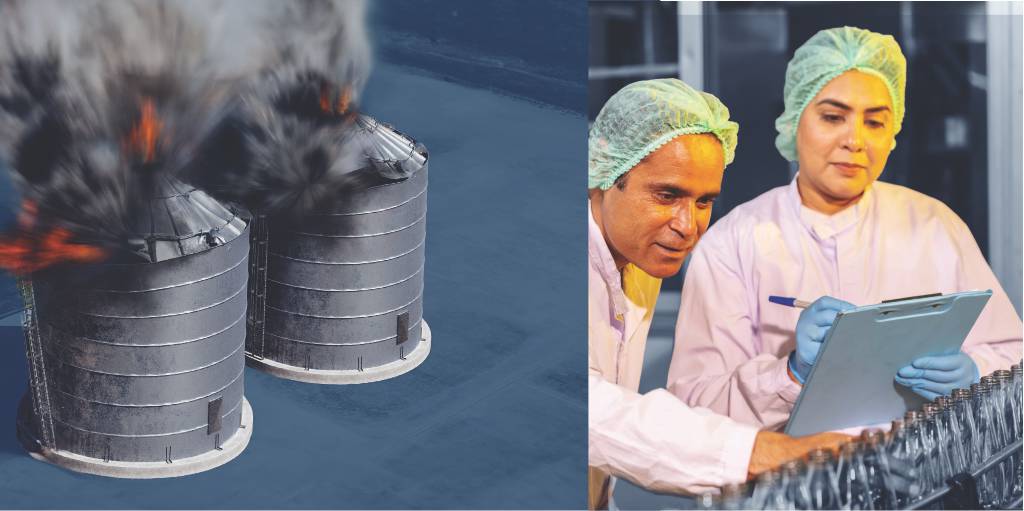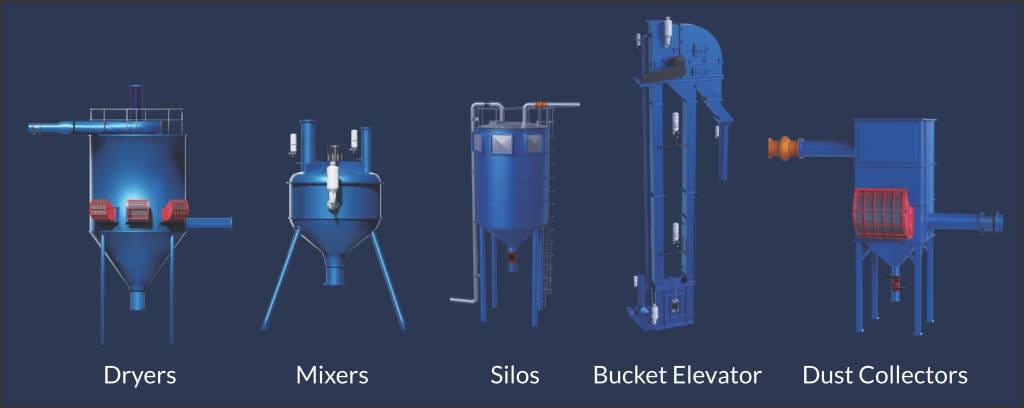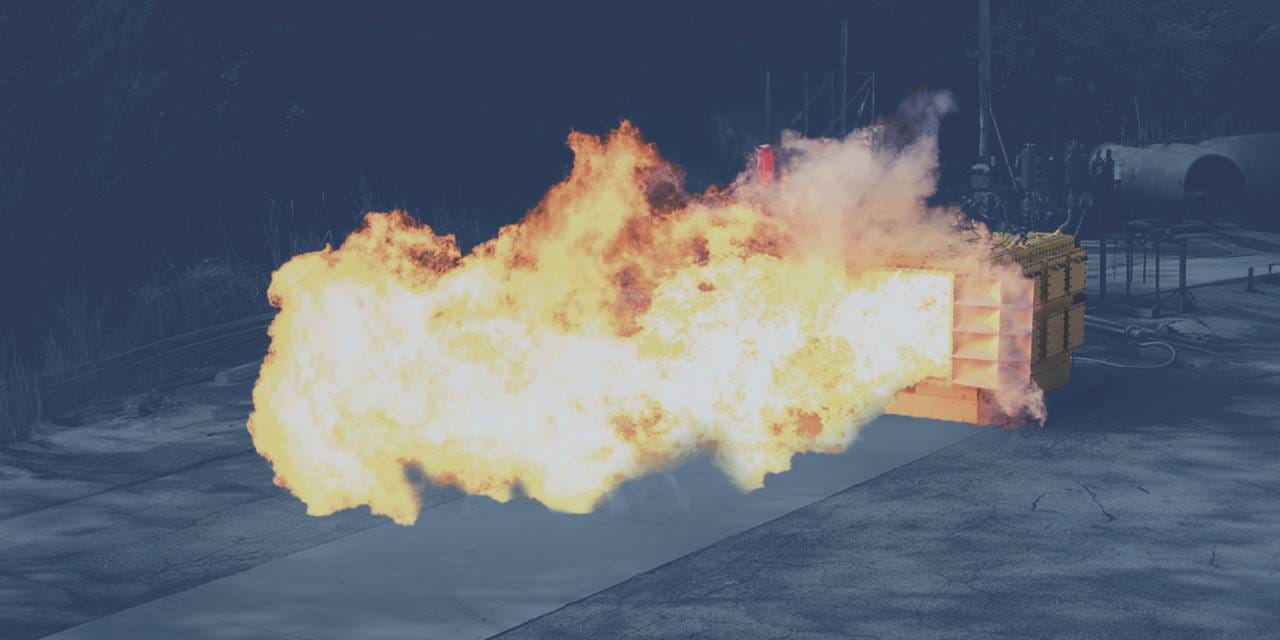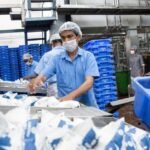Combustible food dust is a serious hazard in food processing facilities. Without proper dust explosion prevention and protection systems, equipment like spray dryers and dust collectors can become ignition points. This article outlines key risks and expert strategies to ensure industrial safety and prevent deadly explosions.
In July 2025, a tragic incident occurred at Sigachi Industries, a prominent pharmaceutical manufacturer in India. A critical lapse in judgment resulted in an explosion that claimed the lives of more than 40 individuals.As a global leader in industrial safety solutions, Fike typically refrains from referencing such tragedies to highlight what should have been done. However, the scale of devastation in this case is too profound to overlook. In our capacity as experts in combustible dust explosion protection, we feel compelled to contribute to the conversation, in hopes that sharing this knowledge may prevent future loss of life.
We believe these deadly explosions of this nature are entirely preventable. This article aims to provide actionable insights for decision-makers within the food production industry to make informed, life-saving choices.

Understanding Combustible Dust Explosions
Dust explosions are more common than widely recognized, though they typically go unnoticed unless the outcome is catastrophic. In the context of food manufacturing, combustible dust includes materials such as flour, sugar, wheat dust, corn dust, and milk powder, among others.
Five critical elements must simultaneously exist for a combustible dust explosion to occur:
- Suspension: Dust must be dispersed into a cloud.
- Confinement: The dust cloud must be enclosed within a space.
- Oxygen: An oxygen-rich environment must be present to support combustion.
- Explosibility: The dust must possess combustible properties, which is frequently the case in food manufacturing.
- Ignition Source: Triggers may include sparks, embers, electrostatic discharge, overheated surfaces, or even discarded cigarette butts.
Evaluating and Managing Risk
The risk of a dust explosion should be considered along two axes: likelihood and severity. A comparison of two hypothetical food production facilities illustrates this point:
- Facility X maintains a clean production environment, monitors equipment temperatures, trains staff in explosion prevention, and has implemented explosion protection systems. This places it on the lower end of the risk spectrum.
- Facility Y, by contrast, permits dust accumulation, neglects equipment maintenance, lacks safety training, and has not consulted explosion protection experts. This facility sits at the high-risk end of the spectrum.
Even with preventive measures, the risk of explosion can never be entirely eliminated. For this reason, explosion protection systems are often recommended in areas where the consequences of an explosion could be severe.
| Also Read: How Filtration Process Drives Efficiency and Safety in Food Manufacturing
Factors Contributing to Severity
Several variables influence the potential severity of a dust explosion:
- The location of the hazard and the number of interconnected dust-laden vessels.
- The volume of combustible material available for propagation.
- The physical properties of the dust, including Kst (rate of pressure rise) and Pmax (maximum pressure). These vary with particle size and moisture content.
A comprehensive risk assessment conducted by explosion protection experts, such as those at Fike, can identify high-risk areas and inform tailored prevention and protection strategies.

Where are combustible dust hazards found in a food production process?
Food production processes include a variety of equipment that handles combustible materials, and therefore, it is impossible to reference them all. However, some equipment types in food processing are particularly susceptible to combustible dust events. Fike focuses its safety efforts on the following:
Spray Dryers: Used to convert liquids into powders using heated air.
Drying Chamber: A dust cloud can form near the base, where product may accumulate and smolder, potentially igniting the cloud.
Product Inlet/Atomizer: Mechanical failure or friction within the atomizer may produce sparks or excessive heat, serving as an ignition source.
Fluid Bed Dryers: Designed to suspend particles in the air while removing moisture with heat.
Drying Volume: Constant dust clouds form as the product is fluidized. Overheated surfaces or powder accumulation can cause smoldering and eventual ignition.
Inlets & Outlets: Dust explosions may propagate through the product inlet/outlet, dedusting line, or air inlet.
Dust Collectors: Used to separate particulate matter from air streams.
Dirty Air Plenum (DAP): Dust enters through the DAP into filter bags, creating dense dust clouds. Electrostatic discharge can ignite the dust.
Product Hopper: Dust accumulates here and may form smoldering nests, increasing explosion risk if not properly managed.
How Explosion Protection Systems Mitigate Combustible Dust Hazards
To effectively mitigate the risk of combustible dust explosions, it is essential to consult with an explosion protection expert who can assess the facility and recommend the most appropriate and cost-effective safety solution.
The evaluation typically begins with determining the feasibility of a passive explosion protection system. These systems – such as explosion vents and mechanical isolation valves – are activated solely by the pressure rise generated during an explosion. They require no electronic control systems, making them both reliable and economically favorable in many cases.
However, the applicability of passive systems can be limited, especially in indoor environments. Traditional explosion vents discharge flames and pressure outward, posing serious hazards to nearby personnel and equipment. In such scenarios, flameless venting systems offer a safer alternative. These devices are designed to absorb heat and contain flames, enabling safe pressure relief within enclosed facilities.
When passive systems are not viable, an active explosion protection system may be necessary. These systems utilize a network of pressure and/or optical detectors that continuously monitor processing conditions, capturing hundreds of data points per second. Upon detecting an abnormal event, the system activates suppression devices and either chemical or mechanical isolation valves – all controlled by a high-speed panel that responds faster than the blink of an eye.
Each type of processing equipment requires a tailored protection strategy. For example, spray dryers are prone to gradual product smoldering, which can lead to delayed ignition. In such cases, carbon monoxide (CO) monitoring at both the inlet and outlet is an effective preventive measure. By detecting elevated CO levels, facility operators can intervene before smoldering escalates into combustion.
So, what should you do?
The first step for facility operators is to consult with a qualified expert – such as Fike – to conduct a combustibility analysis of the dust present in the facility. If the dust is found to be combustible, a comprehensive risk assessment should follow to identify and prioritize hazardous areas.
Based on the findings, a combination of prevention strategies (e.g., housekeeping, maintenance, staff training) and explosion protection solutions may be recommended to mitigate risk and prevent catastrophic outcomes.
Ultimately, the success of any safety strategy depends on the actions of those responsible for protecting their workforce. Making the right decision – one supported by data, expertise, and proven technologies – can save lives.
Help is available. One call could be the difference between a near miss and a tragedy.
To know more, please visit Fike.com or call +971-4-823-7555
Have a news or topic to share with industry? Write to us editorial@pfionline.com

















